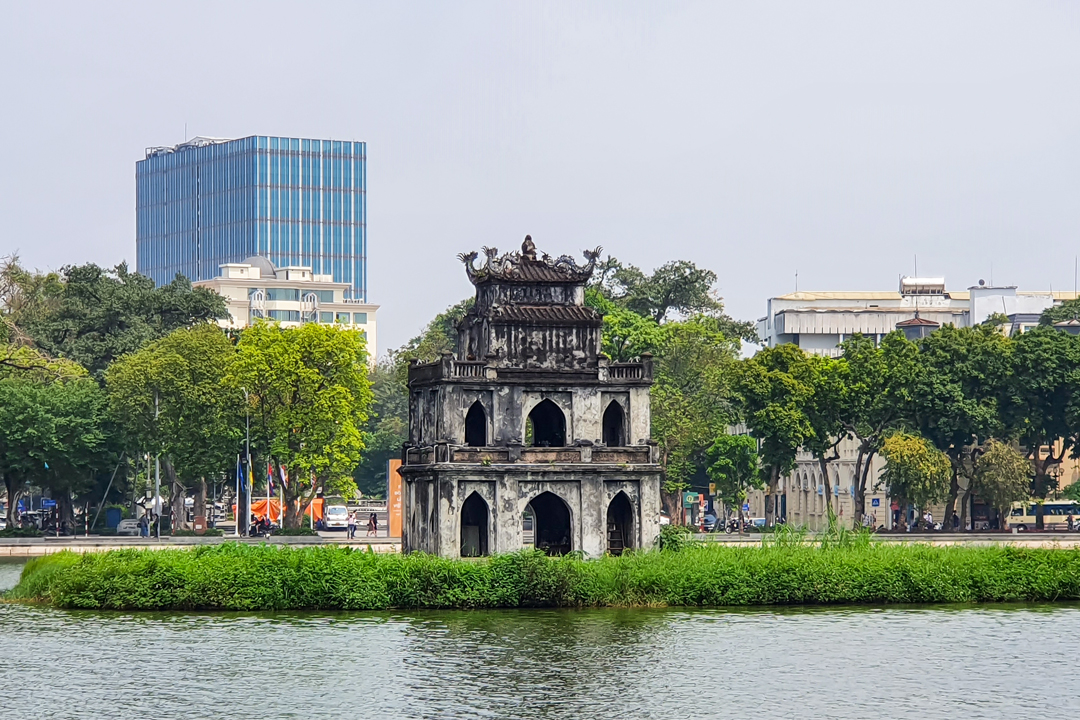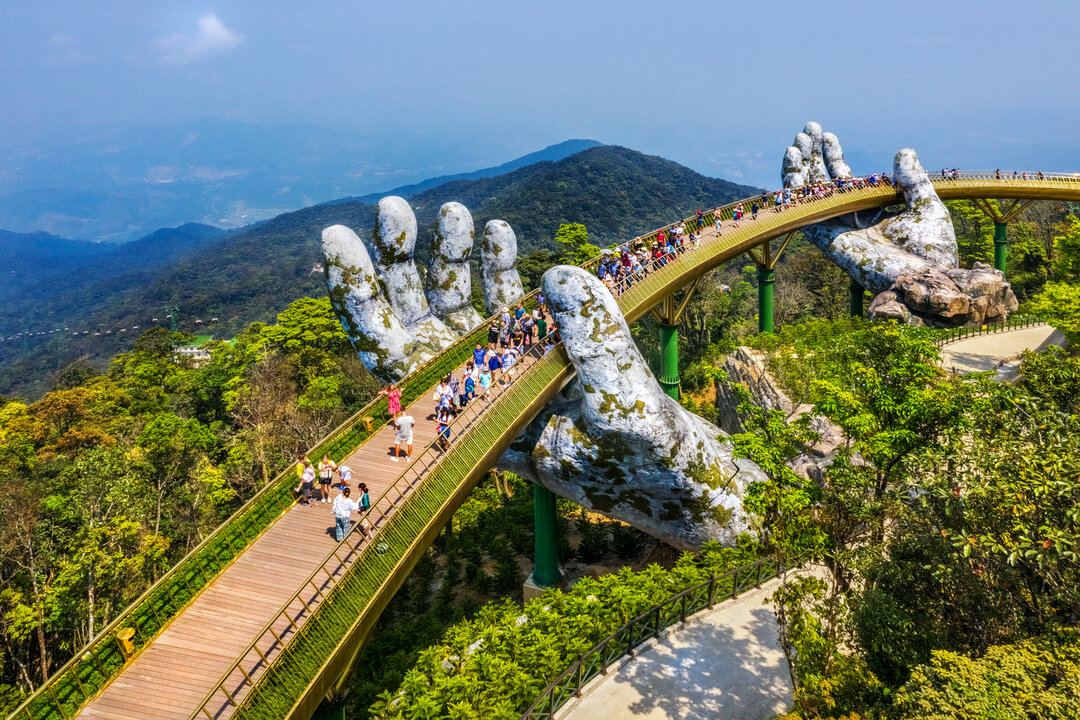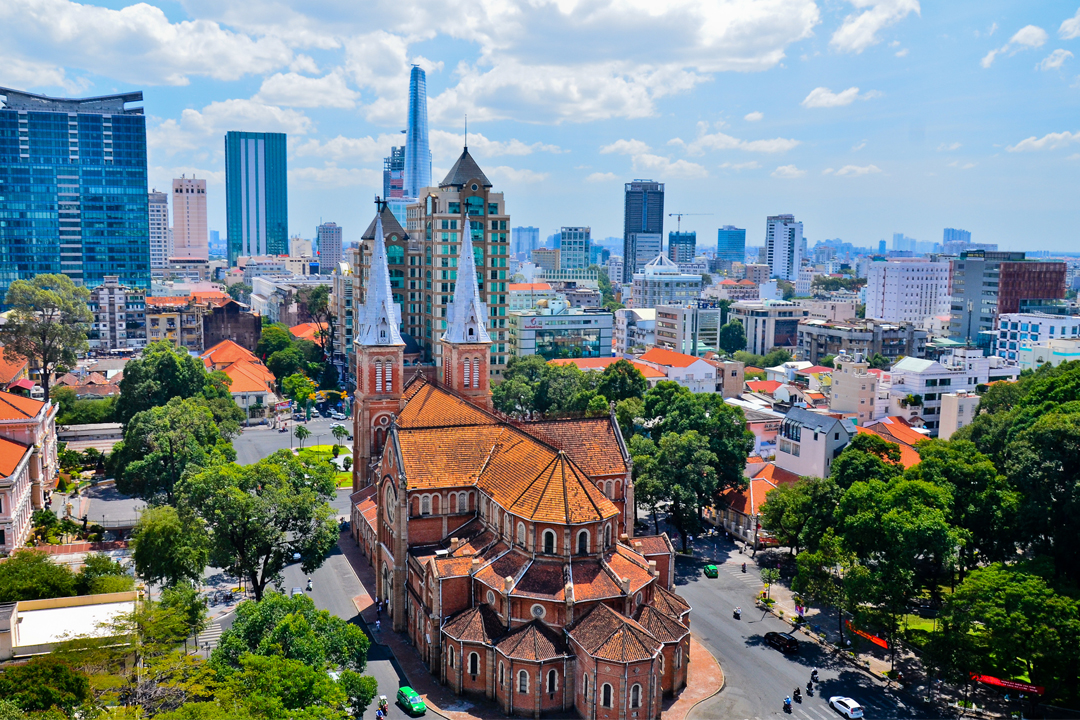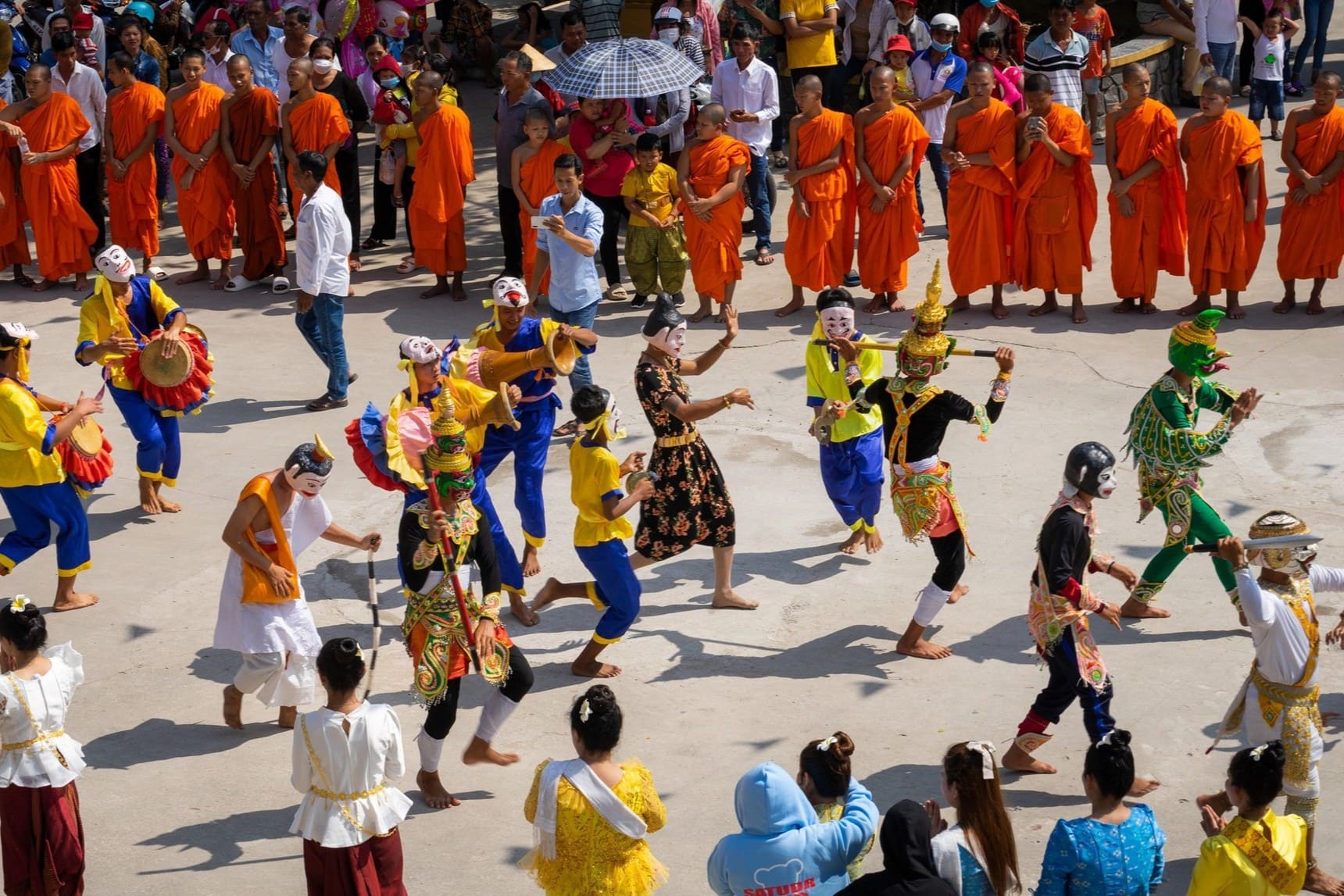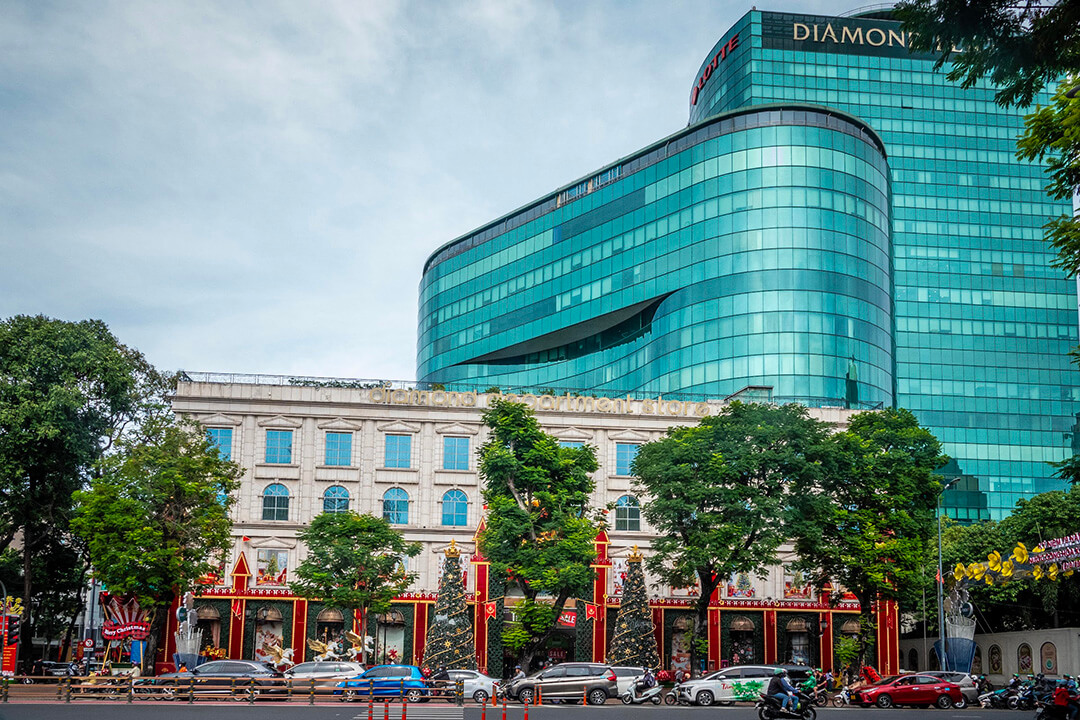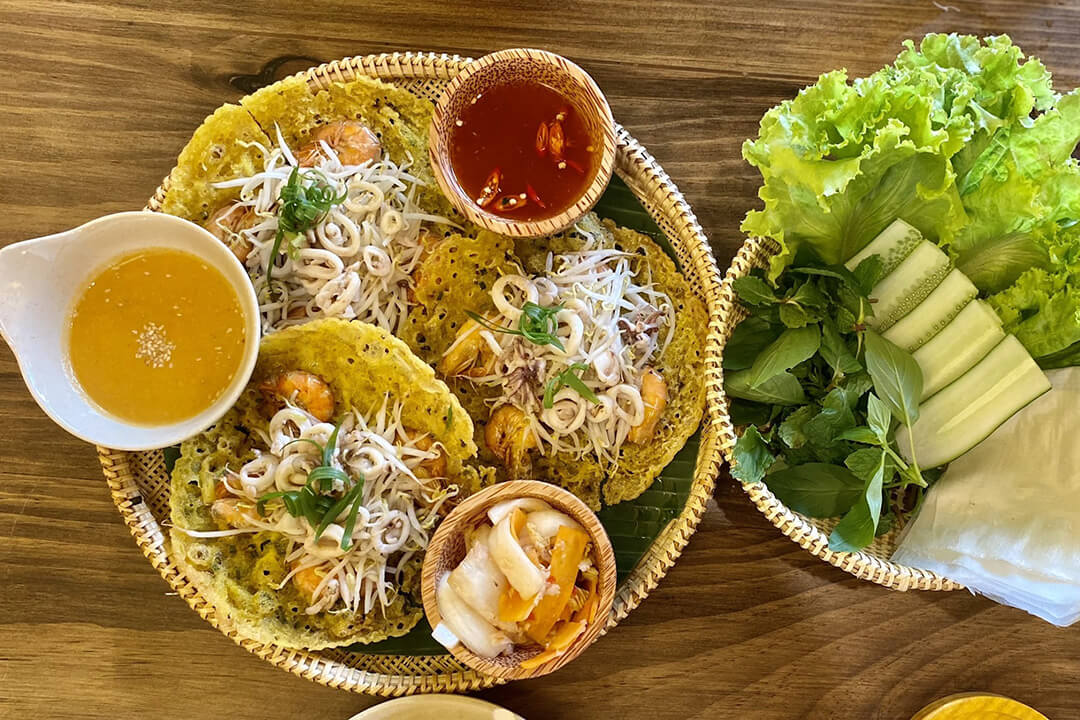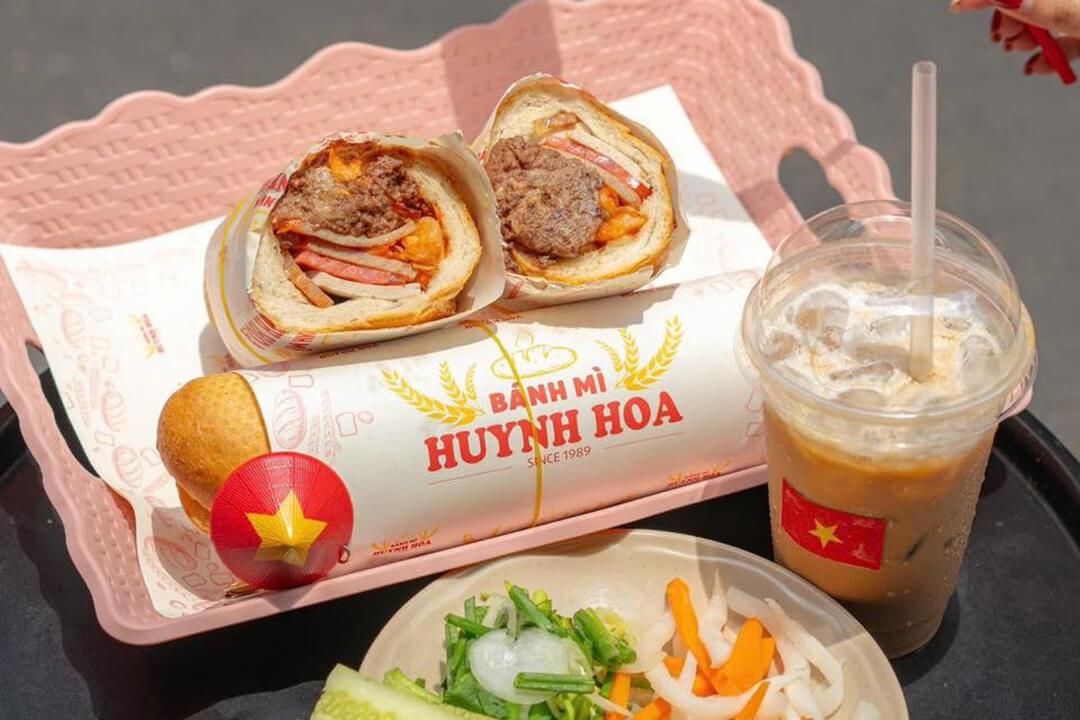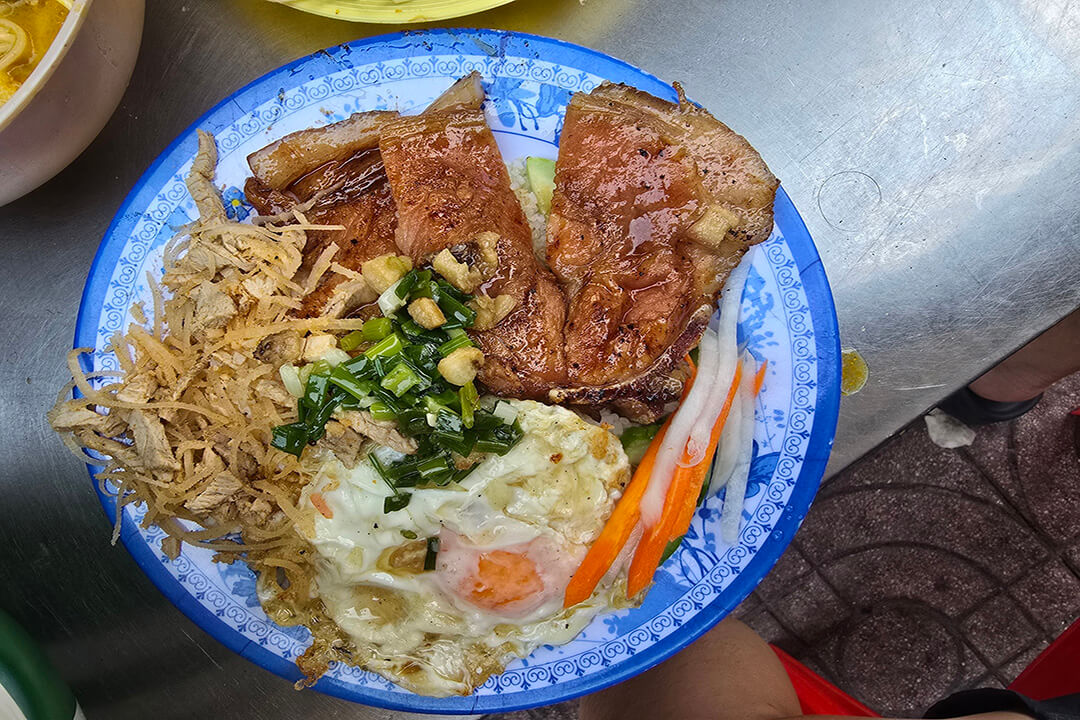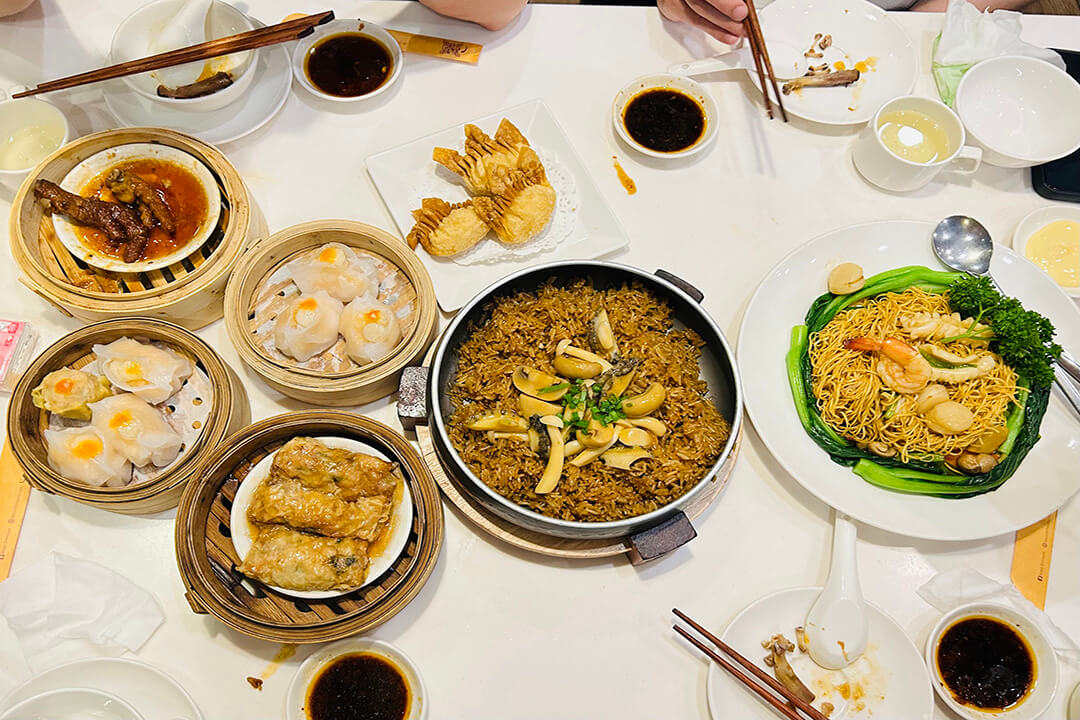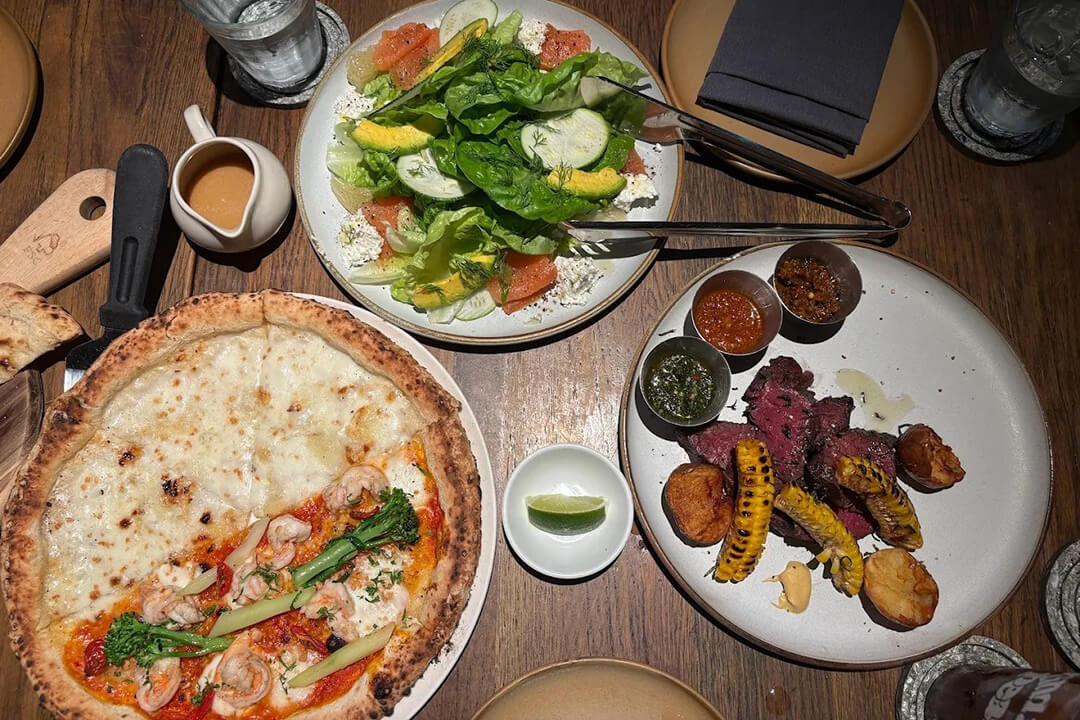Jul - 08 - 2025
Hanoi, a city where history and modernity intertwine seamlessly, offers an enthralling cultural journey through its vibrant museum scene. If you're a curious traveler eager to delve into Vietnam’s rich heritage or a seasoned explorer seeking hidden gems beyond the typical tourist path, Hanoi’s museums are a must-visit. They offer unique glimpses into the country's storied past and dynamic present. Curious travelers seeking Vietnam’s rich heritage and seasoned explorers looking beyond the usual tourist trail will find Hanoi’s museums deeply rewarding. They reveal powerful stories of the nation’s past and offer fresh perspectives on its dynamic present. In this article, GTrip presents a curated list of the top museums in Hanoi, complete with highlights, visiting tips, and must-see exhibits that bring Vietnam’s history and identity to life.
1. Hanoi Museum
- Address: Pham Hung Street, Tu Liem Ward, Hanoi
- Opening hours 8:00 AM - 11:30 AM | 1:30 PM - 5:00 PM (closed on Mondays)
- Entrance fee: 30,000 VND/person (approximately $1.15)
Hanoi Museum stands as one of the capital's most architecturally striking cultural institutions and offers a comprehensive overview of the city's rich historical legacy. Opened in 2010 for Hanoi's millennial anniversary, the museum features over 50,000 artifacts tracing the city's journey from prehistoric times to the present. It's an inverted pyramid design, with expanding upper floors. This creates a dramatic visual effect and serves a functional purpose: shielding delicate exhibits from direct sunlight while providing visitors with a unique spatial journey through time.
Inside, the museum is organized across four floors. The ground floor features prehistoric artifacts, including Dong Son bronze drums and early tools. The second floor focuses on treasures from the Ly, Tran, Le, and Nguyen Dynasties. The third floor highlights traditional crafts and revolutionary history, while the fourth showcases contemporary art and Hanoi’s modern development. Visitors will find interactive displays, multilingual panels, and occasional cultural performances in the central exhibition space. Additional amenities include a research library, a gift shop with artefact replicas, a small cafe, and guided tours in English, French, and Vietnamese. For history lovers and curious travelers alike, the Hanoi Museum is an ideal gateway to understanding the capital’s long and layered past.
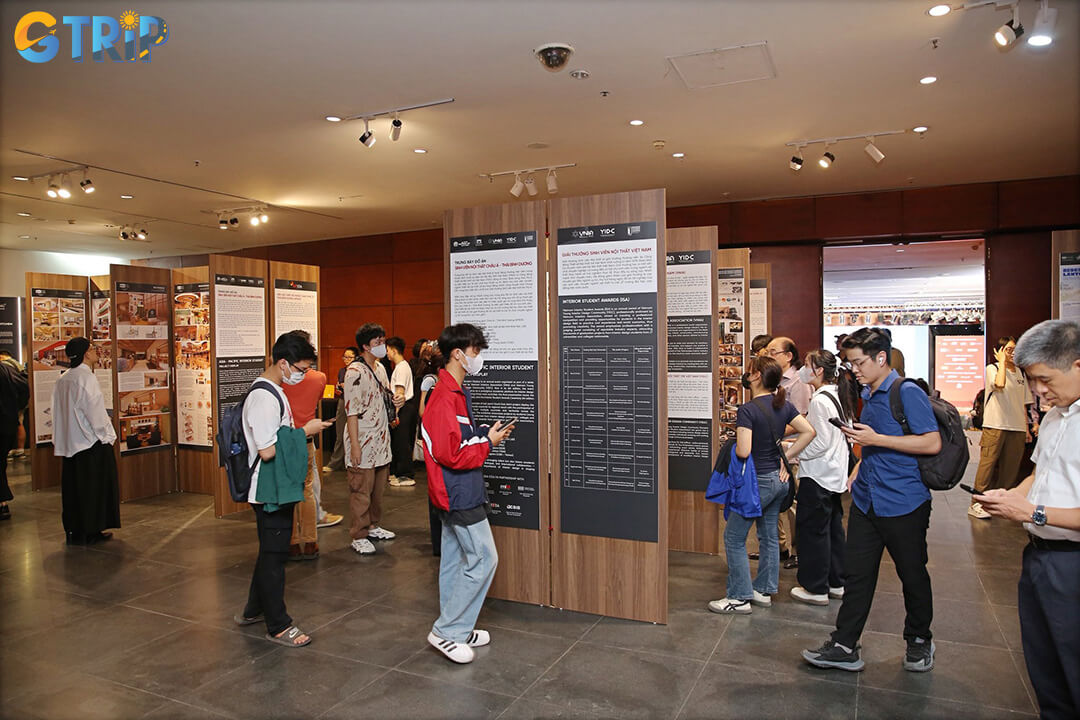
Hanoi Museum offers a rich journey through the capital’s history with over 50,000 artefacts spanning from prehistory to the present
2. Hoa Lo Prison Museum (Hanoi Hilton)
- Address: No. 1, Hoa Lo Street, Hoan Kiem Ward, Hanoi
- Opening hours 8:00 AM - 5:00 PM, daily
- Entrance fee: 30,000 - 50,000 VND (approximately $1.30 - $2)
Hoa Lo Prison Museum offers a sobering look into two pivotal chapters of Vietnam’s history: French colonial rule and the Vietnam War. Originally built by the French in 1896 to imprison Vietnamese revolutionaries, Hoa Lo became a symbol of resistance against colonial oppression. During the Vietnam War, it gained notoriety as the "Hanoi Hilton", a grimly ironic nickname given by American POWs held there.
Today, only a preserved portion of the original prison remains, including the formidable gatehouse. Visitors can explore cramped prison cells, chilling torture devices from the colonial period, and the infamous French guillotine. The American POW section features personal artifacts such as Senator John McCain’s flight suit and details of prisoners' lives and escapes. Memorial rooms honor Vietnamese revolutionaries, while detailed exhibits offer insight into the prison's critical role in the fight for independence. For those seeking a deeper emotional connection to Vietnam’s past, the museum also offers night tours titled "Sacred Night - Glorious Vietnamese Spirit" every Friday to Sunday at 7:00 PM. Though emotionally intense, Hoa Lo Prison Museum is essential for anyone wishing to understand the resilience and sacrifice that shaped modern Vietnam.
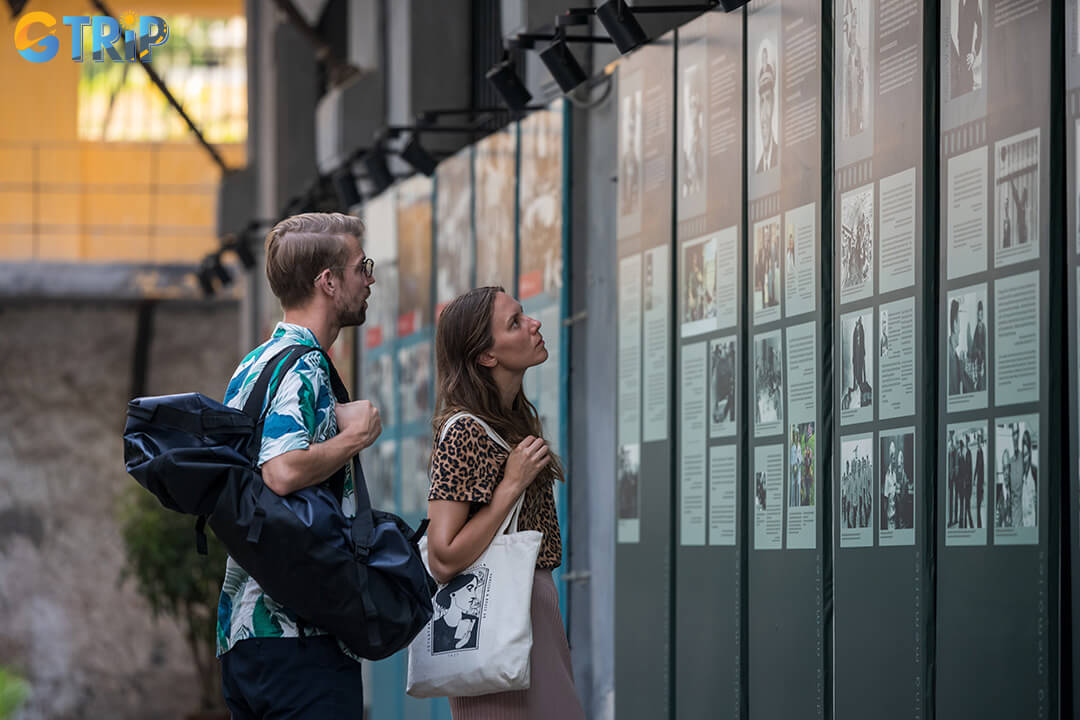
Hoa Lo Prison Museum offers a powerful, emotional journey through Vietnam’s colonial resistance and the Vietnam War, featuring haunting exhibits and historic artifacts
3. Ho Chi Minh Museum (Hanoi campus)
- Address: No. 19, Ngoc Ha Street, Ba Dinh Ward, Hanoi
- Opening hours 8:00 AM - 12:00 PM | 2:00 PM - 4:30 PM (closed on Monday and Friday)
- Entrance fee: Approximately 40,000 VND for foreign visitors (Vietnamese citizens typically enter for free)
Ho Chi Minh Museum stands as a profound tribute to Vietnam's most revered leader and national hero. Architecturally striking, the building is designed to resemble a white lotus flower traditional Vietnamese symbol of purity and enlightenment. This distinctive structure houses an extensive collection documenting the life and revolutionary journey of Ho Chi Minh, affectionately known as "Uncle Ho" to the Vietnamese people. It chronicles his pivotal role in Vietnam's struggle for independence and the shaping of national identity.
Inside, visitors can explore over 170,000 meticulously preserved documents, artefacts, photos, and films that vividly illustrate Ho Chi Minh's remarkable life. The museum traces his journey from humble roots in central Vietnam to his formative years abroad, where he shaped his revolutionary ideology. The displays culminate with his triumphant leadership during Vietnam's fight for independence and subsequent nation-building efforts. Information throughout the museum is presented in Vietnamese, English, and French, making it accessible to international visitors seeking to understand Vietnam's complex history.
The museum forms a significant part of the larger Ho Chi Minh Mausoleum complex, making it convenient to combine your visit with other nearby historical sites. It includes the Mausoleum itself, the Presidential Palace, and the iconic One Pillar Pagoda. For history and culture enthusiasts, the museum offers deep insights into the revolutionary spirit that shaped modern Vietnam.
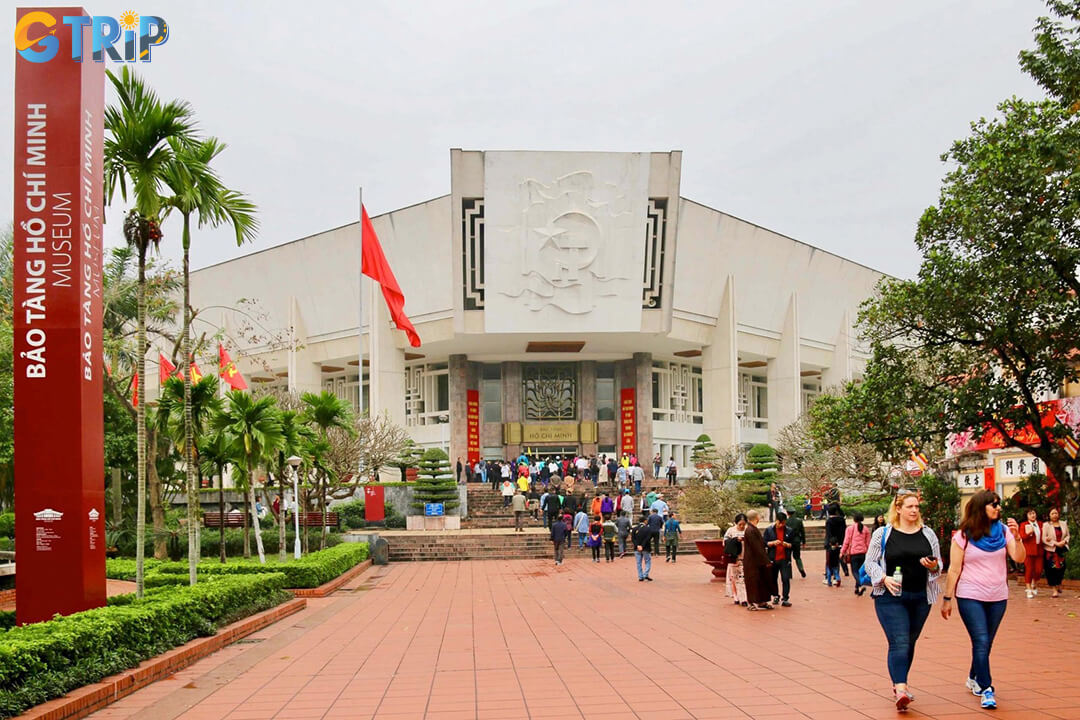
Shaped like a white lotus, the Ho Chi Minh Museum honors Vietnam’s national hero with powerful exhibits tracing his life, ideology
4. Vietnam Museum of Ethnology
- Address: Nguyen Van Huyen Road, Cau Giay Ward, Hanoi
- Opening hours 8:30 AM - 5:30 PM daily (Closed on Mondays)
- Entrance fee: 40,000 VND/person (approximately $1.53)
Vietnam Museum of Ethnology stands as a cultural treasure in Hanoi, offering visitors an unparalleled glimpse into the rich tapestry of Vietnam's ethnic diversity. Housed in a striking drum-shaped building inspired by the ancient Dong Son drums, this institution serves as both a comprehensive research center and a public exhibition space. It is dedicated to preserving and showcasing the traditions of Vietnam's 54 ethnic groups. The museum's thoughtful design creates an immersive journey through Vietnam's cultural landscape. It is widely regarded as the most inclusive and detailed museum dedicated to the country's ethnic minorities.
What truly sets this museum apart is its expansive outdoor exhibition area where full-sized traditional houses from various ethnic communities have been meticulously reconstructed. These authentic dwellings, from the stilted homes of the Tay people to the communal longhouses of the Ede, allow visitors to step directly into the living environments of different ethnic groups. Inside these structures, visitors can explore traditional furniture arrangements, household tools, and architectural techniques that have been preserved for generations. It creates an experience that extends far beyond conventional museum displays.
The museum excels at creating family-friendly engagement opportunities that transform passive observation into active learning. Children and adults alike can participate in water puppet shows, try on traditional clothing, or learn basket-weaving techniques from artisans. These interactive elements, combined with the museum's extensive collection of everyday objects, ceremonial items, and cultural artefacts. It provides visitors with a profound understanding of how Vietnam's diverse ethnic communities have shaped the country's cultural identity throughout history.
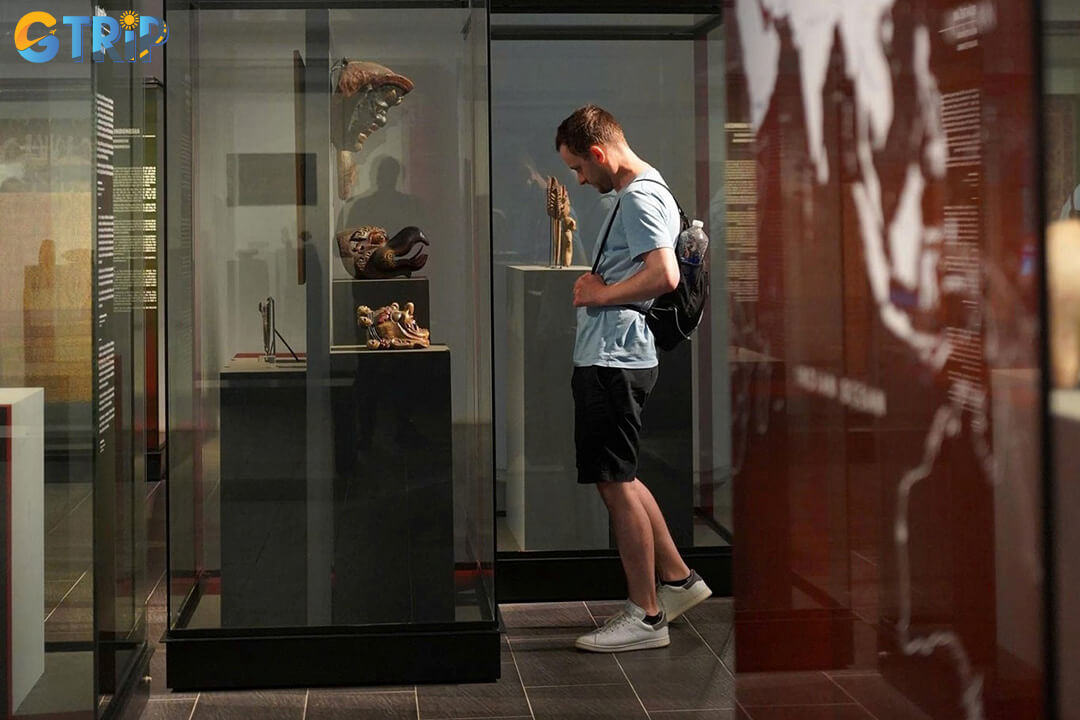
Ho Chi Minh Museum honors Vietnam’s national hero with powerful exhibits tracing his life, ideology, and role in the country’s fight for independence
5. B-52 Victory Museum
- Address: No. 157, Doi Can Street, Ba Dinh District, Hanoi
- Opening hours 8:00 AM - 11:00 AM | 1:30 PM - 4:30 PM (closed on Monday and Friday)
- Entrance fee: Free
B-52 Victory Museum commemorates the 12-day "Hanoi - Dien Bien Phu in the air" campaign against U.S. bombing in December 1972. This museum offers visitors a unique opportunity to witness the actual wreckage of a downed American B-52 Stratofortress bomber. This provides tangible evidence of Vietnam's successful defense strategies during Operation Linebacker II. Through comprehensive exhibits, the museum vividly portrays how Vietnamese forces mounted an extraordinary defense against one of history's most intense bombing campaigns.
Inside, visitors can explore authentic military artifacts, including sophisticated air defense equipment, captured weaponry, and detailed dioramas depicting the aerial battles over Hanoi. The exhibits masterfully narrate the tactical ingenuity employed by Vietnamese defenders, showcasing how a relatively small nation effectively challenged American air superiority. Photographs, documents, and personal accounts bring to life the courage and resilience demonstrated during those twelve days and nights of relentless bombing.
The museum's outdoor exhibition area is particularly impressive, featuring:
- An array of anti-aircraft artillery pieces was used during the conflict
- SA-2 surface-to-air missiles that proved effective against high-altitude bombers
- Radar equipment that helped detect incoming aircraft
- A pristinely preserved MiG-21 fighter jet representing Vietnam's air force
- Large fragments of downed American aircraft
For history enthusiasts seeking insight into Vietnam's wartime experience, the B-52 Victory Museum offers a direct look at one of the conflict's major aerial campaigns. It’s a must-visit for anyone exploring Hanoi’s military history.
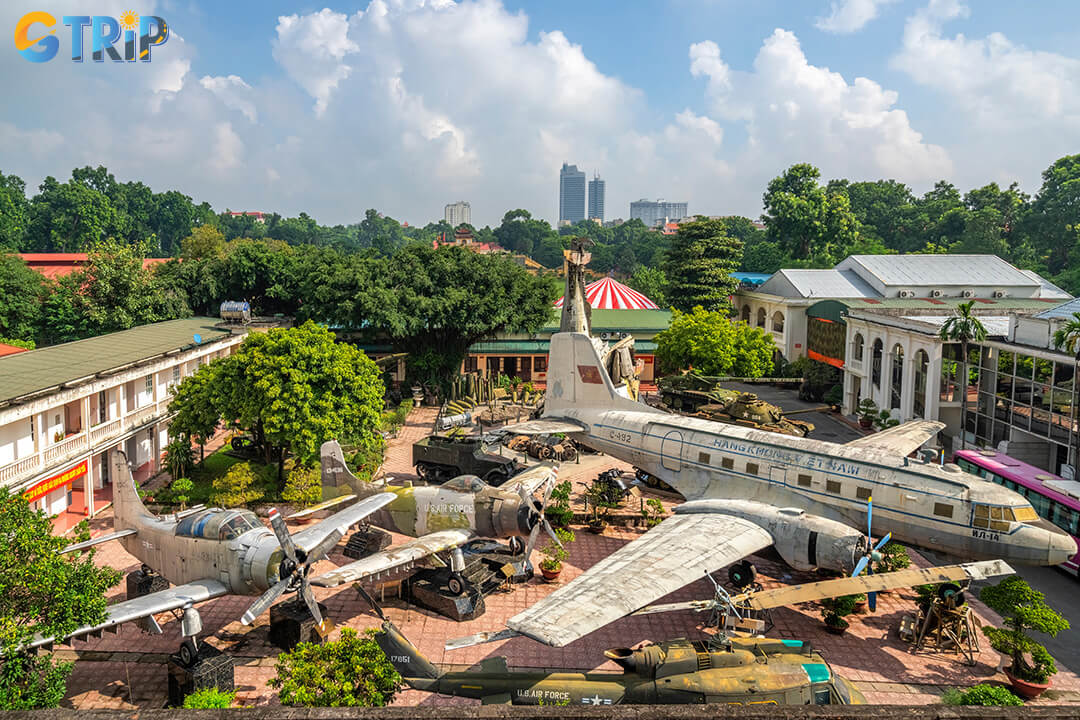
The B-52 Victory Museum offers a vivid look at Vietnam’s air defense during the 1972 featuring real B-52 wreckage and powerful wartime exhibits
6. Vietnam National Fine Arts Museum
- Address: 66 Nguyen Thai Hoc, Ba Dinh Ward, Hanoi
- Opening hours 8:30 AM - 5:00 PM, every day except for Mondays
- Entrance fee: 40,000 VND/person (approximately $1.53)
Set in a grand colonial building with Vietnamese elements, Vietnam National Fine Arts Museum highlights the nation's rich artistic legacy. Spanning 3,000 m², its exhibitions feature around 2,000 carefully curated artworks across various media such as painting, sculpture, ceramics, lacquerware, folk art, and applied arts. Together, they offer visitors a compelling journey through the evolution of Vietnamese creativity from prehistoric times to the present.
Collection highlights:
- Traditional ethnic minority crafts showcase Vietnam's cultural diversity
- Ancient ceramics from notable Vietnamese pottery traditions
- Revolutionary propaganda art from the resistance and war periods
- Contemporary fine art pieces by Vietnam's most celebrated modern artists
- Remarkable examples of Vietnamese lacquerware technique (son mai)
- Folk paintings from villages like Dong Ho and Hang Trong
Beyond its permanent collection, the museum regularly hosts temporary solo exhibitions and traveling shows, providing a dynamic platform for contemporary artists to showcase their work. This commitment to both historical preservation and modern expression makes the museum a living institution rather than simply a repository of the past.
For families, the children's creative space offers hands-on art activities that make art fun and accessible for all ages. The museum ensures visitor comfort with modern amenities such as wheelchair access, assisted listening devices, a restaurant, and clean restrooms. These features create an enriching cultural experience accessible to everyone exploring Hanoi's artistic heritage.
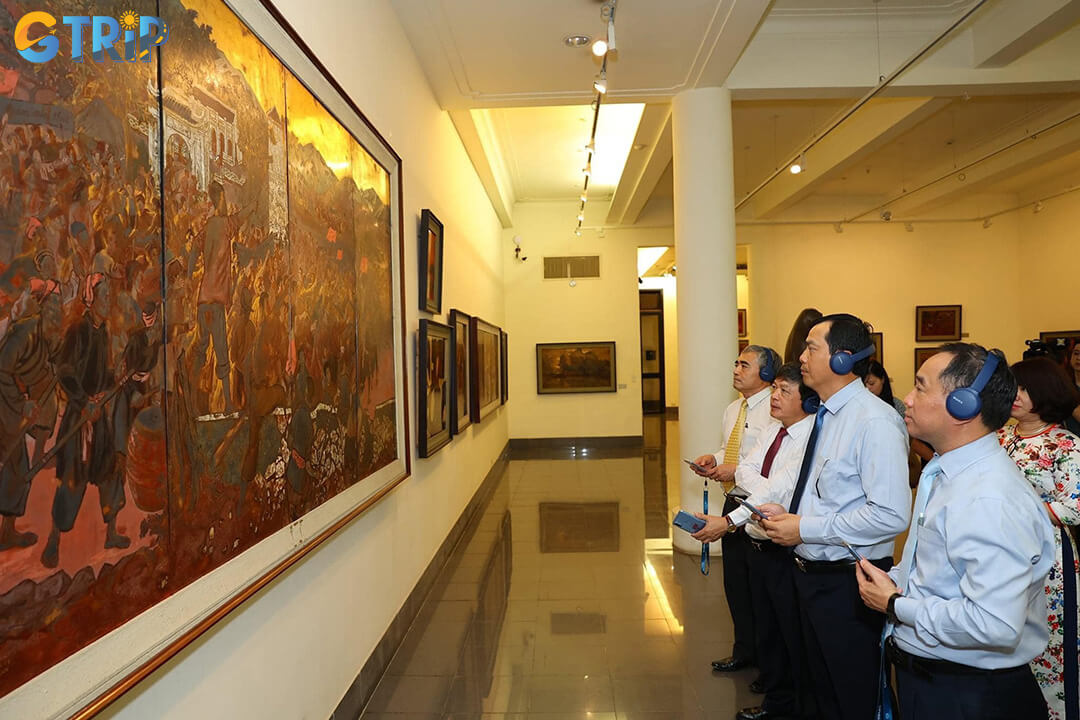
Set in a colonial-style building, the Vietnam National Fine Arts Museum traces Vietnamese art from ancient ceramics to modern works across 2,000 exhibits
7. Vietnam Military History Museum
- Address: Thang Long Boulevard, Tu Liem Ward, Hanoi
- Opening hours 8:00 AM - 11:30 AM | 1:00 PM - 4:30 PM (closed on Monday and Friday)
- Entrance fee: 40,000 VND/person (approximately $1.53)
Vietnam Military History Museum stands as a testament to Vietnam's resilient military heritage, chronicling the nation's journey from ancient warfare to modern defense strategies. Located in Hanoi's Ba Dinh District (now Ba Dinh Ward), this premier national museum spans an impressive 386,000 square meters. It features the iconic 45-meter Victory Tower that symbolizes Vietnam's 1945 declaration of independence. The museum's striking modern architecture houses over 150,000 artifacts arranged chronologically across 6 thematic sections. It creates an immersive educational experience enhanced by 3D mapping, touchscreens, and QR codes.
What truly distinguishes this museum is its collection of four national treasures. Highlights include two MiG-21 "Silver Swallow" jets, tank 843 that entered Saigon's Independence Palace in 1975, and the Ho Chi Minh Campaign map outlining Vietnam's final victory strategy. The dramatic indoor display of a suspended MiG-21 aircraft creates an unforgettable visual centrepiece. Outside, the exhibition area showcases an impressive array of authentic military hardware, including artillery, tanks, missiles, and aircraft from both Vietnamese and foreign forces.
Key highlights:
- Victory Tower commemorating Vietnam's independence
- MiG-21 aircraft with documented combat history against American aircraft
- T54B tank #843, which played a crucial role in Saigon's 1975 liberation
- Ho Chi Minh Campaign map illustrating strategic planning
- Extensive outdoor displays contrasting Vietnamese military equipment against French and American weaponry
The museum provides an accessible cultural experience for visitors of all ages. It offers unique insights into Vietnam's military achievements and the historical context of its struggles for independence and unification. The outdoor display of Vietnamese and foreign weaponry powerfully highlights the nation's wartime resilience, resonating with both locals and tourists.
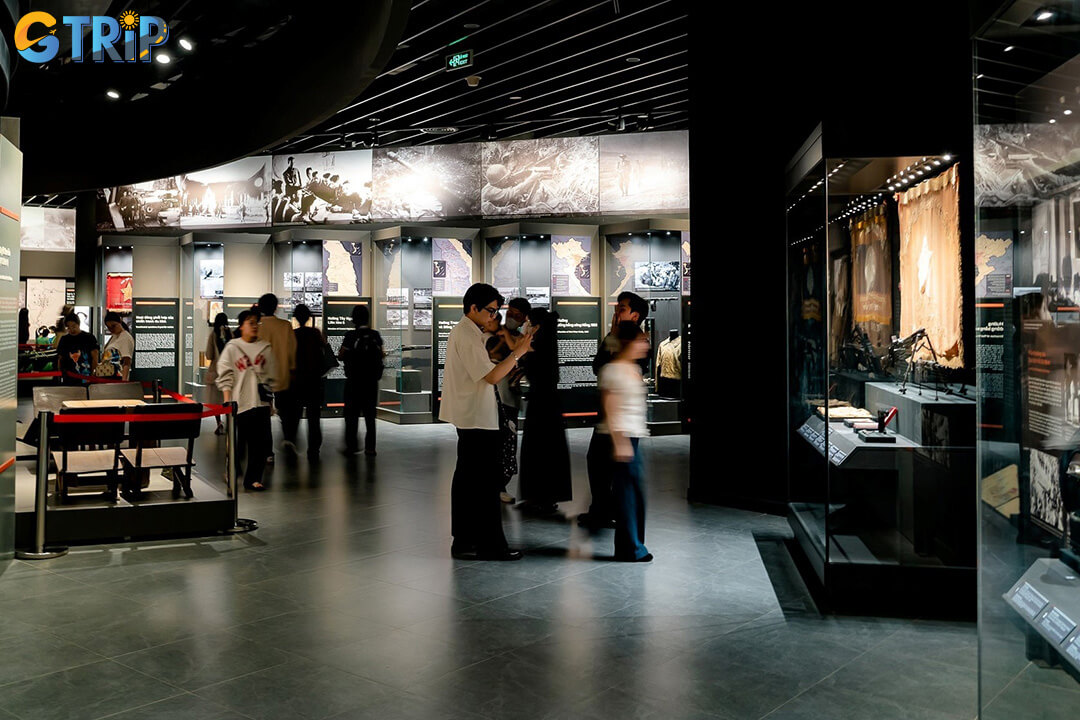
The Vietnam Military History Museum showcases the nation’s military legacy with iconic artifacts and the Victory Tower across a vast, immersive space
8. Vietnamese Women's Museum
- Address: 36 Ly Thuong Kiet Street, Hoan Kiem Ward, Hanoi
- Opening hours 8:00 AM - 5:00 PM (Closed Mondays)
- Entrance fee: 40,000 VND per person (approximately $1.53)
Vietnamese Women's Museum stands as a powerful testament to the resilience and contributions of Vietnamese women throughout history. This cultural gem offers visitors an intimate look at women's roles across Vietnam's diverse ethnic tapestry through thoughtfully curated exhibitions and artifacts. Located in the heart of Hanoi's bustling Hoan Kiem district, the museum presents a unique perspective on Vietnamese culture and history through the female lens.
Spread across five floors, the museum houses over 1,000 artefacts, photographs, and multimedia displays that collectively tell stories of strength, creativity, and leadership. The exhibits are organized into three main permanent collections that provide comprehensive insights into the multifaceted lives of Vietnamese women:
- Women in family: Explores traditional domestic roles, wedding customs, childbirth practices, and family traditions
- Women in history: Chronicles women's contributions from ancient times through revolution and war, featuring stories of heroic mothers and female leaders
- Women's fashion: Showcases the stunning diversity of traditional costumes, jewellery, and textiles from Vietnam's 54 ethnic groups
What makes this museum particularly valuable is its commitment to presenting complex cultural heritage in an accessible way. The exhibitions feature clear English and French signage alongside Vietnamese, making it ideal for international visitors seeking deeper cultural understanding. The museum also functions as a research center promoting gender equality and addressing contemporary issues affecting women.
The Vietnamese Women’s Museum offers deep insight into the nation’s culture through the stories and contributions of its women. Most visitors spend about 1 - 2 hours exploring the collections, making it an excellent addition to any Hanoi itinerary.
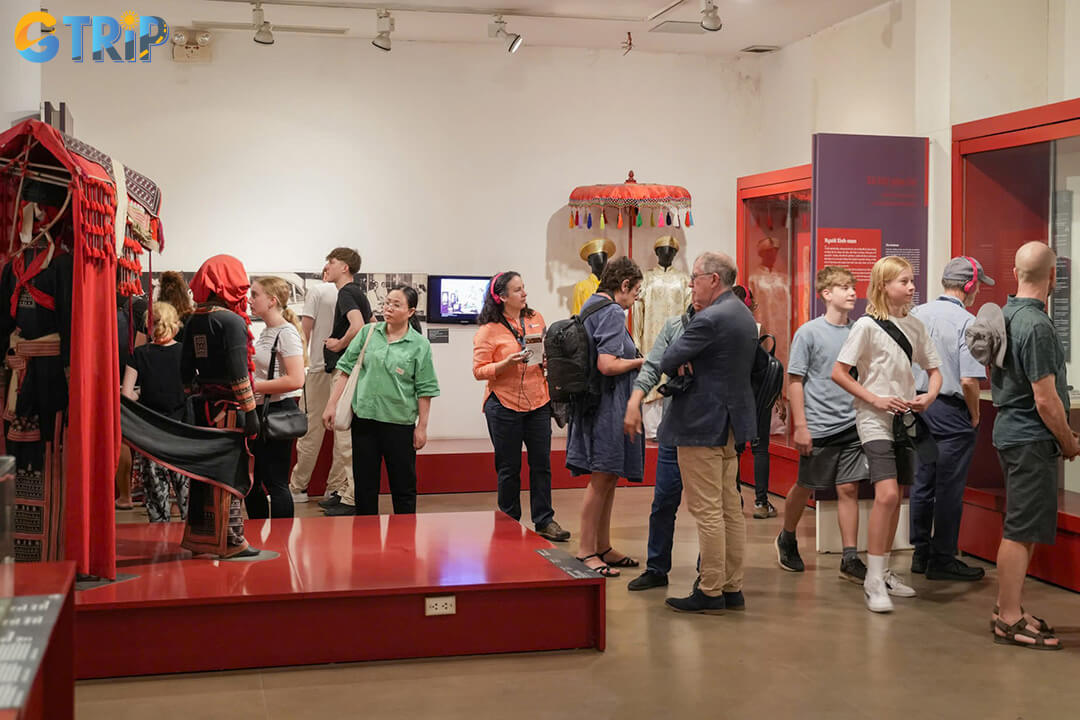
The Vietnamese Women’s Museum offers a powerful look at the lives, roles, and resilience of women across Vietnam’s history and 54 ethnic groups
9. Vietnamese National Museum of History
- Address:
- Building 1: No. 1, Trang Tien Street, Hoan Kiem District
- Building 2: No. 216, Tran Quang Khai Street, Hoan Kiem District
- Opening hours 8:00 AM - 12:00 PM | 1:30 PM - 5:00 PM (closed on Monday)
- Entrance fee: 40,000 VND/person (approximately $1.53)
- Photography fee: 30,000 VND for cameras
Vietnamese National Museum of History stands as a captivating repository of Vietnam's rich heritage. It offers visitors an immersive journey through the nation's past from prehistoric times to the modern era. Set in two grand colonial buildings, the museum displays over 200,000 artifacts reflecting Vietnam's cultural and historical journey.
The museum is divided between two locations, each focusing on different periods of Vietnamese history. The first building presents prehistoric artifacts and relics from feudal dynasties, while the second building houses exhibits documenting Vietnam's modern revolutionary history. Visitors can marvel at exquisitely preserved ceramics, bronze drums, stone tools, and religious artifacts that span thousands of years of civilization.
Highlights of the collection:
- Dong Son bronze drums date back to the 3rd century BCE
- Stone and bronze artefacts from prehistoric Vietnam
- Ceramics and pottery from various dynasties
- Buddhist sculptures and religious artworks
- Revolutionary documents from Vietnam's independence movements
- Artefacts from the Champa and Khmer civilizations
- Archaeological discoveries from ancient Vietnamese kingdoms
A stunning 1932 landmark, the Vietnamese National Museum of History blends French colonial and traditional Vietnamese architecture. Inside, exhibits trace Vietnam’s history from ancient times to today, with bilingual descriptions for international visitors. For history enthusiasts and cultural explorers, this museum offers a rich and thought-provoking perspective on the nation’s complex and resilient past.
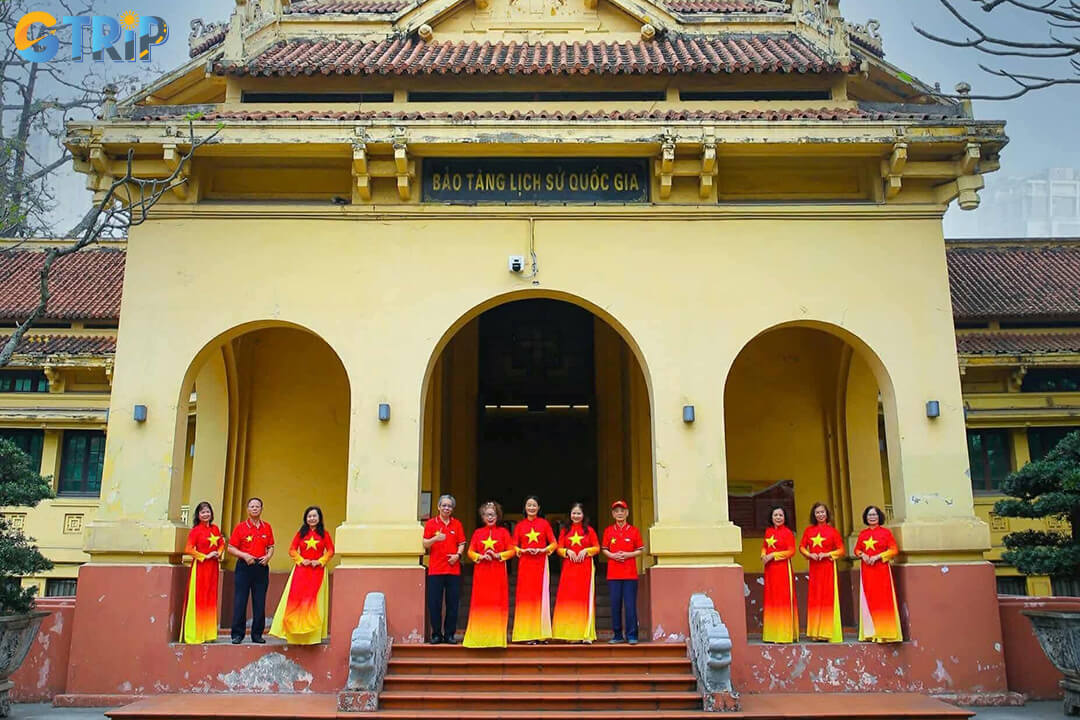
The Vietnamese National Museum of History traces Vietnam’s past through 200,000 artifacts, housed in two elegant colonial buildings
10. Vietnam People's Air Force Museum
- Address: No.173C Truong Chinh Road, Thanh Xuan Ward, Hanoi
- Opening hours Every day except Friday | 8:00 AM - 11:00 AM and 1:00 PM - 4:00 PM
- Entrance fee: 30,000 VND/person (approximately $1.15/person)
Vietnam People's Air Force Museum offers visitors a captivating journey through Vietnam's aviation and military history. Founded to honor the Vietnamese air force, the museum showcases aircraft, weapons, and memorabilia tracing its history to the present. The exhibits reveal how Vietnam’s smaller air force overcame more advanced opponents, especially during the American War.
The museum features both indoor exhibitions and an outdoor display area where visitors can get up close to actual aircraft used in combat. The climate-controlled indoor section presents personal items of notable pilots, reconnaissance photographs, medals, uniforms, and detailed dioramas depicting famous air battles. Outside, a vast display of military hardware, stands as a powerful symbol of Vietnam's resistance.
While less frequented by international tourists than some other Hanoi museums, the museum offers an authentic and unfiltered perspective on a crucial aspect of Vietnam's history. It makes it a worthwhile addition to any comprehensive Hanoi museum itinerary.
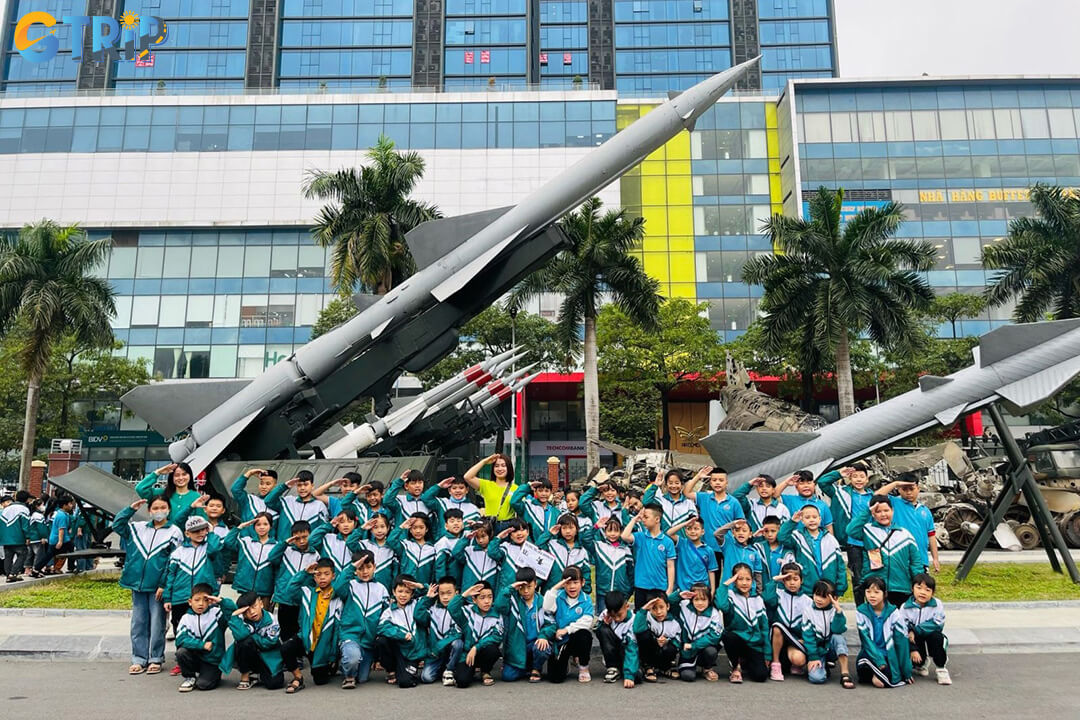
The Vietnam People's Air Force Museum showcases the nation’s aviation history through combat aircraft, pilot memorabilia, and powerful displays of wartime resilience
11. Museum of Armored Forces
- Address: No. 108, Hoang Quoc Viet Street, Cau Giay Ward, Hanoi
- Opening hours 8:00 AM - 11:00 AM | 2:00 PM - 4:00 PM (closed on Friday)
- Entrance fee: Free
The Museum of Armored Forces highlights Vietnam’s military history and the heroic evolution of its armored divisions. Opened in 1995 under the Political Department of the Armored Corps, this specialized museum showcases a rich collection of tanks, armored vehicles, and weapons. Personal artifacts further illustrate Vietnam's struggle for independence. Five exhibition rooms chronicle Vietnam’s armored forces from their 1959 origins to their role in liberation and national defense.
Highlights include Tank 390 and Crew 377, which famously broke through Saigon’s Independence Palace gates on April 30, 1975, marking the war’s end. Military enthusiasts will enjoy technical displays of tanks and armored vehicles from various combat periods. History buffs can explore detailed battle maps, strategic plans, and personal stories of the forces' heroes and martyrs.
Exhibition highlights:
- Formative Years Gallery (1959 - 1965) - Displays the establishment of Vietnam's first armored units and early training
- Anti-US Resistance Period (1965 - 1968) - Features equipment used to counter American "Local War" strategies
- Battlefield Victory Room (1969 - 1974) - Showcases significant victories and technological adaptations
- 1975 Spring Offensive Collection - Houses artifacts from the final campaign including the famous Tank 390
- Modern Development Section - Presents the evolution of Vietnam's armored forces from 1975 to present day
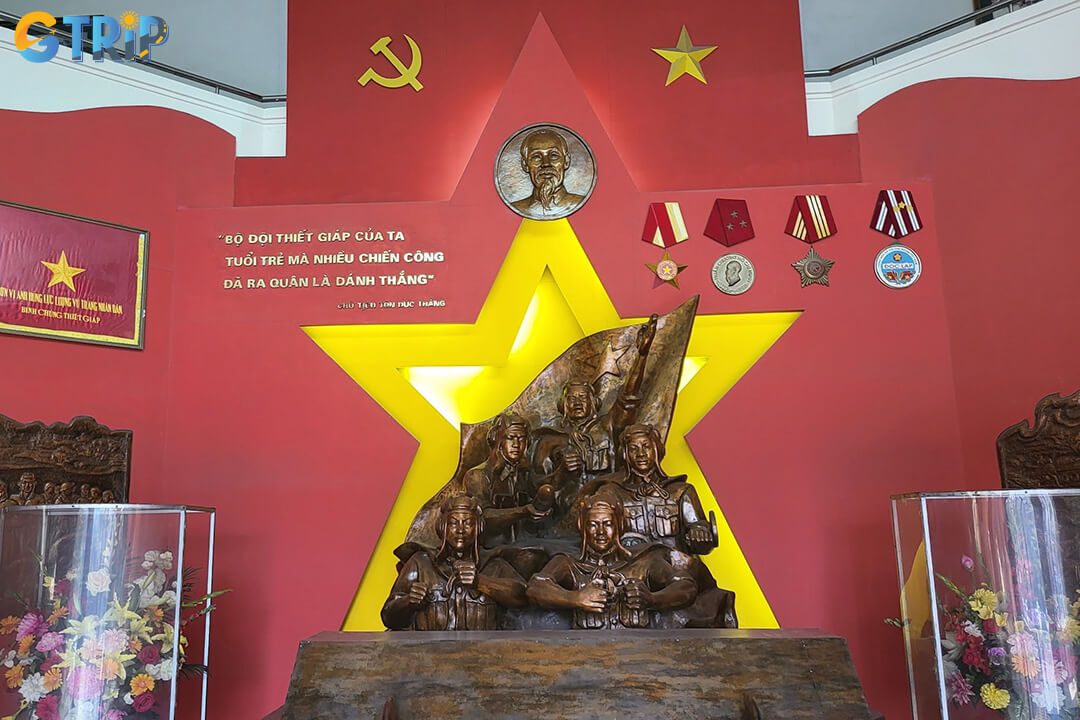
The Museum of Armored Forces traces Vietnam’s military history through tanks, weapons, and artifacts, spotlighting the role of armored units in key battles
12. Ho Chi Minh Trail Museum
- Address: Yen Nghia, Ha Dong Ward, Hanoi
- Opening hours Tuesday to Saturday: 7:30 AM - 11:30 AM and 1:30 PM - 4:30 PM (Closed on Sundays and Mondays)
- Entrance fee: 20,000 VND/person (approximately $0.77)
The Ho Chi Minh Trail Museum stands as a powerful tribute to one of the most remarkable military supply routes in modern history. This museum chronicles the 16,000-kilometre jungle trail that linked North Vietnam to southern forces during the American War. Through over 15,000 original artefacts, visitors gain insight into the resilience and ingenuity that kept the trail operational despite intense bombing and treacherous terrain. Highlights include large-scale dioramas, replica tunnels, interactive maps spanning Vietnam, Laos, and Cambodia, and personal letters from those who built and defended the trail.
At its peak, the Ho Chi Minh Trail moved 20,000 troops monthly and was maintained by as many young volunteers despite relentless U.S. bombing. The museum’s 2,700 m² exhibition space is organized chronologically and features a 15-minute English-subtitled documentary to provide context. Visitors can also reflect in a peaceful memorial garden and enjoy full wheelchair accessibility. Located just outside central Hanoi, the museum offers deep insight into Vietnam’s wartime strategy, ideal for those seeking more than mainstream war narratives.
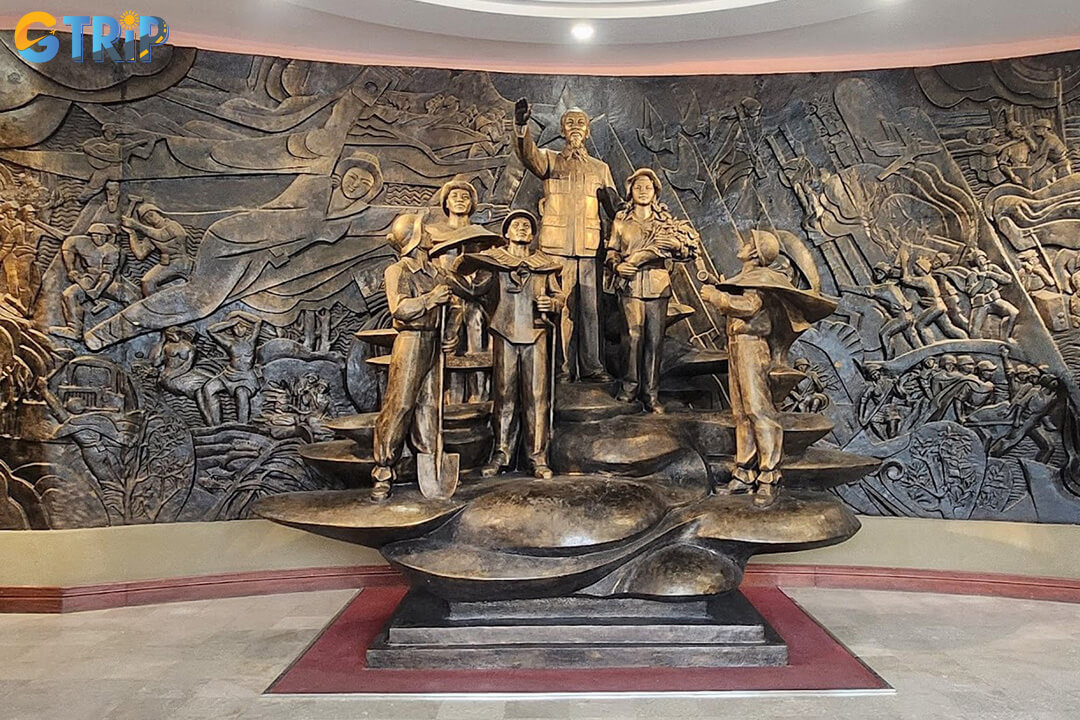
The Ho Chi Minh Trail Museum traces Vietnam’s legendary wartime supply route through 15,000 artifacts, immersive exhibits, and powerful stories of resilience
13. Hanoi Police Museum
- Address: 67 Ly Thuong Kiet Street, Hoan Kiem District, Hanoi
- Opening hours 8:00 AM - 4:30 PM (closed on Monday and Sunday)
- Entrance fee: Free
Hanoi Police Museum offers a compelling look into the evolution of the city’s law enforcement, housed in a sleek modern building in the heart of Hanoi. This specialized museum traces the development, challenges, and achievements of Hanoi’s police forces, from their early formation and colonial resistance to modern-day operations. Its professionally designed exhibits across multiple floors offer a rare glimpse into a lesser-known aspect of Vietnamese history. Unlike more widely visited institutions, the museum highlights the vital role of security forces in shaping and safeguarding the city.
Key exhibits feature a timeline gallery, resistance documents, badges, vintage gear, and a memorial hall for fallen officers. Visitors can explore interactive displays, authentic police vehicles, and well-preserved uniforms, along with video presentations recounting key operations. With its educational and engaging layout, the museum appeals to history lovers, families with older children, and curious travelers. Though lesser-known, its central location in the Hoan Kiem district makes it a valuable and accessible stop for those seeking a deeper understanding of Hanoi’s institutional and civic history.
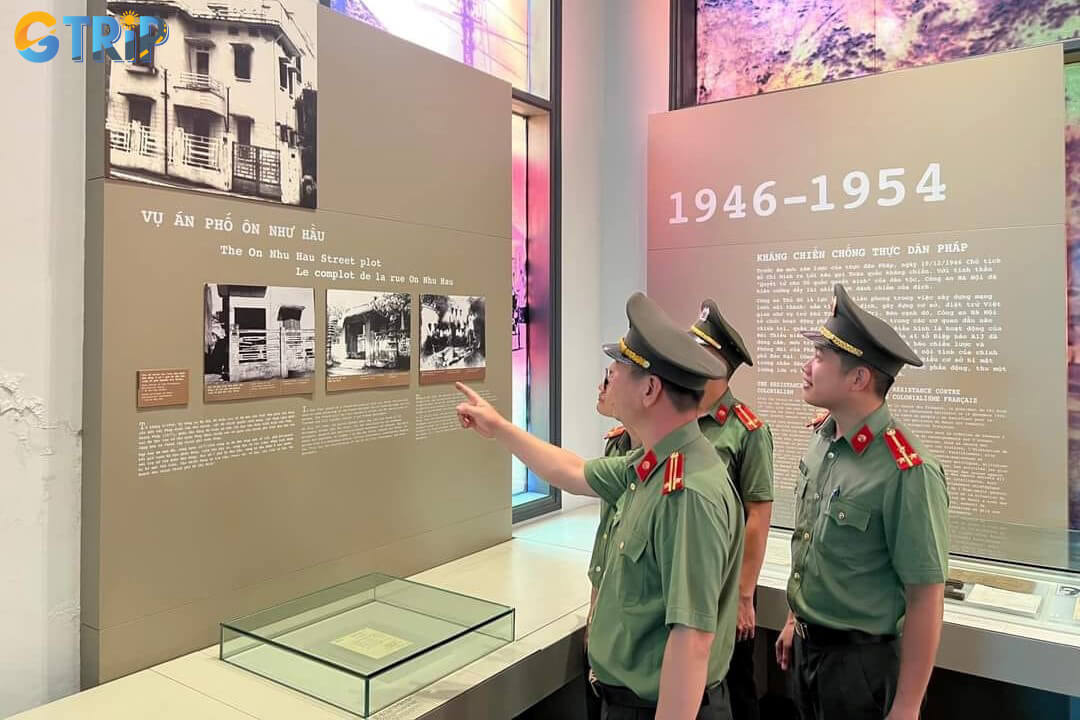
Hanoi Police Museum offers a unique look at the city’s law enforcement history through interactive exhibits, vintage gear, and rare artifacts in a modern downtown setting
14. Bat Trang Pottery Museum
- Address: Hamlet 5, Bat Trang Pottery Village, Gia Lam District, Hanoi
- Opening hours Weekdays: 8:00 AM - 5:30 PM and weekends: 8:00 AM - 6:00 PM
- Entrance fee: 60,000 VND/person (approximately $2.30)
The Bat Trang Pottery Museum is a cultural gem in Hanoi’s pottery village, set in a modern building shaped like a traditional potter’s wheel. Opened in 2022, the museum honors over 700 years of ceramic craftsmanship that has made Bat Trang internationally famous. Inside, visitors can explore the evolution of Vietnamese ceramics through chronological displays, from 14th-century techniques to contemporary innovations. Interactive touchscreens, climate-controlled galleries, and rare artifacts, offer a rich and immersive experience. Highlights include Ly-Tran Dynasty pieces, the "Founding Families" exhibition, kiln models in the Technology Room, and a gallery of award-winning contemporary ceramics.
The museum also offers interactive experiences like pottery workshops (150,000 - 300,000 VND), live demos, a digital wheel simulator, and a clay-touch station. The building itself is thoughtfully designed with full accessibility, including elevators, ramps, and restrooms on every floor. After the tour, guests can unwind at the rooftop cafe with tea, snacks, and panoramic views of Bat Trang Pottery Village, a perfect mix of tradition and comfort.
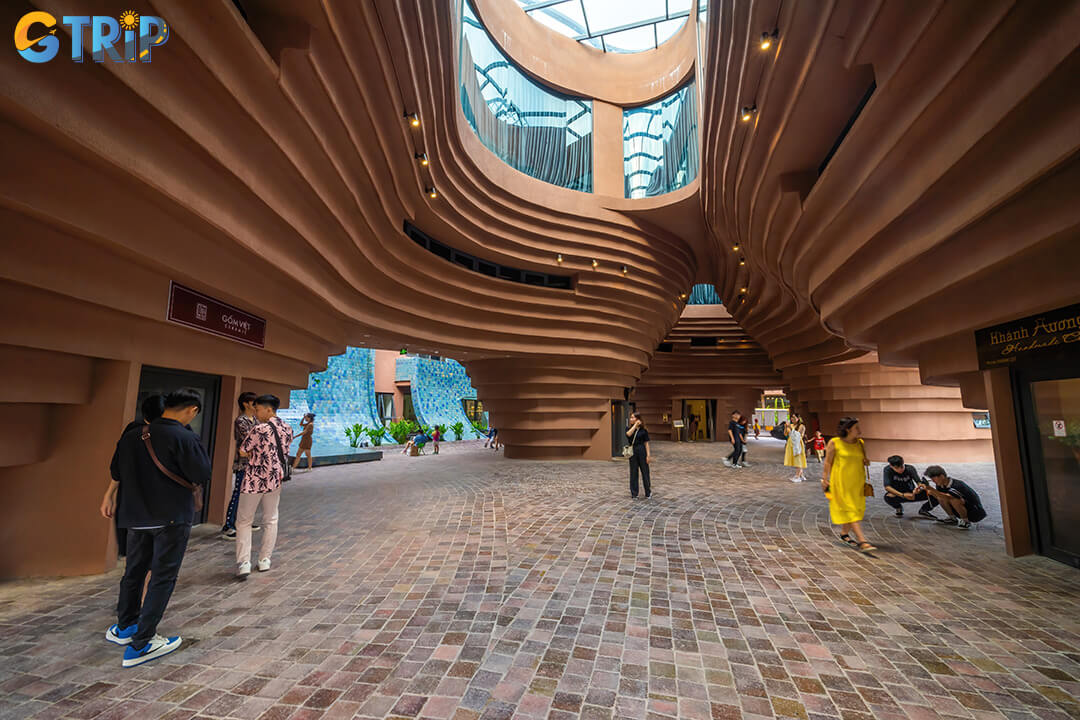
Bat Trang Pottery Museum celebrates 700 years of ceramic art in a wheel-shaped modern building, offering hands-on experiences, rare artifacts
15. Geological Museum of Vietnam
- Address: No. 6, Pham Ngu Lao Street, Hoan Kiem Ward, Hanoi
- Opening hours 8:00 AM - 12:00 PM and 1:00 PM - 5:00 PM (closed on Saturday and Sunday)
- Entrance fee: Free
Geological Museum of Vietnam offers a fascinating glimpse into the Earth's history and the country’s rich geological heritage. Located in Hanoi’s Hoan Kiem District (now Hoan Kiem Ward), this hidden gem takes visitors on a journey from the planet’s formation to Vietnam’s unique geological evolution. With over 4,000 specimens, the museum combines educational depth with visual intrigue, appealing to travelers with an interest in natural science.
Spread across three floors and 1,200 square meters, the museum features exhibits such as prehistoric fossils, vibrant gemstones, and interactive displays that simplify complex geological concepts. Key sections include Earth and the Solar System (First Floor), Vietnam’s Geological Evolution (Second Floor), and Mineral Resources (Third Floor). Founded by French geologists during the colonial period, the museum initially housed specimens from across Indochina and was later transferred to Vietnamese management in 1954. Expanded in the 1990s, it remains both a scientific research hub and an engaging educational space for visitors of all ages.
The museum offers particular value for geology enthusiasts, students, and travelers seeking to understand Vietnam's natural landscape beyond its surface beauty. Its free admission makes it an accessible educational stop during your exploration of Hanoi's cultural offerings. It provides context to the country's topographical diversity that you'll encounter throughout your travels.
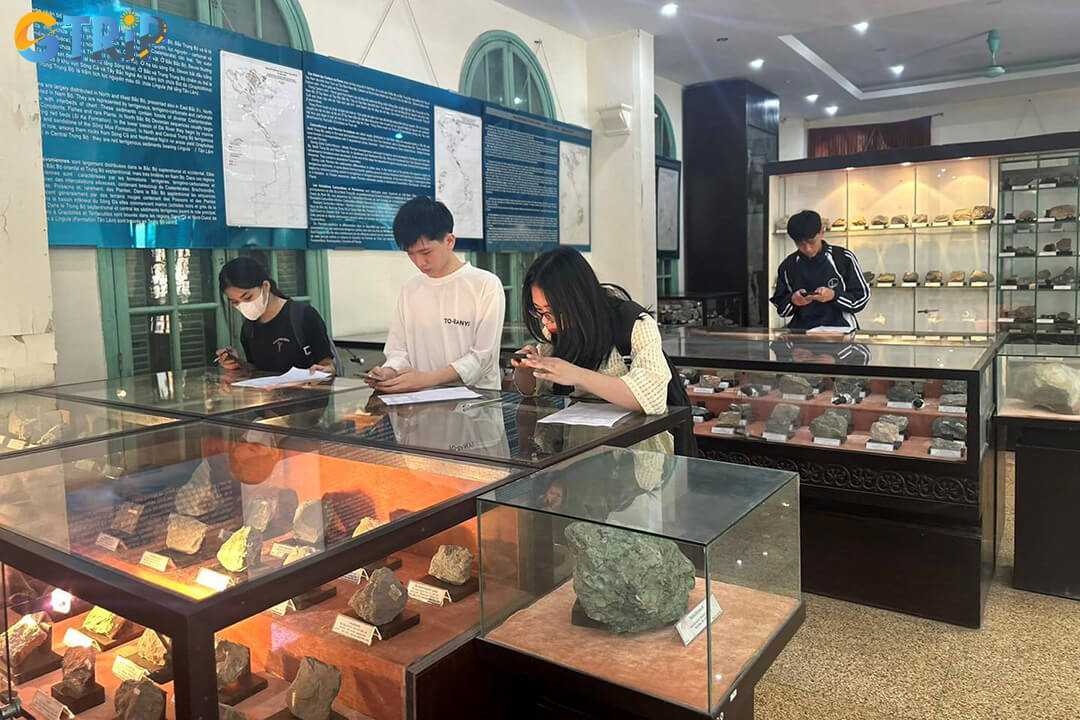
Geological Museum showcases over 4,000 fossils, gems, and minerals, offering an engaging look at the country’s geological evolution from prehistoric times to today
Exploring the museums in Hanoi offers a compelling glimpse into Vietnam's rich tapestry of history, art, and culture. Each venue provides not just an educational experience but also a deeper connection to the stories that have shaped this vibrant city. As you wander through these curated spaces, you gain more than just knowledge-you acquire memories imbued with insights and inspirations unique to Hanoi. These explorations can serve as stepping stones for further adventures or even spark conversations that enrich your understanding of the world. If you're planning your next journey or simply indulging in armchair tourism, GTrip hopes this list empowers your travel dreams with essential ideas and subtle encouragement for discovery

